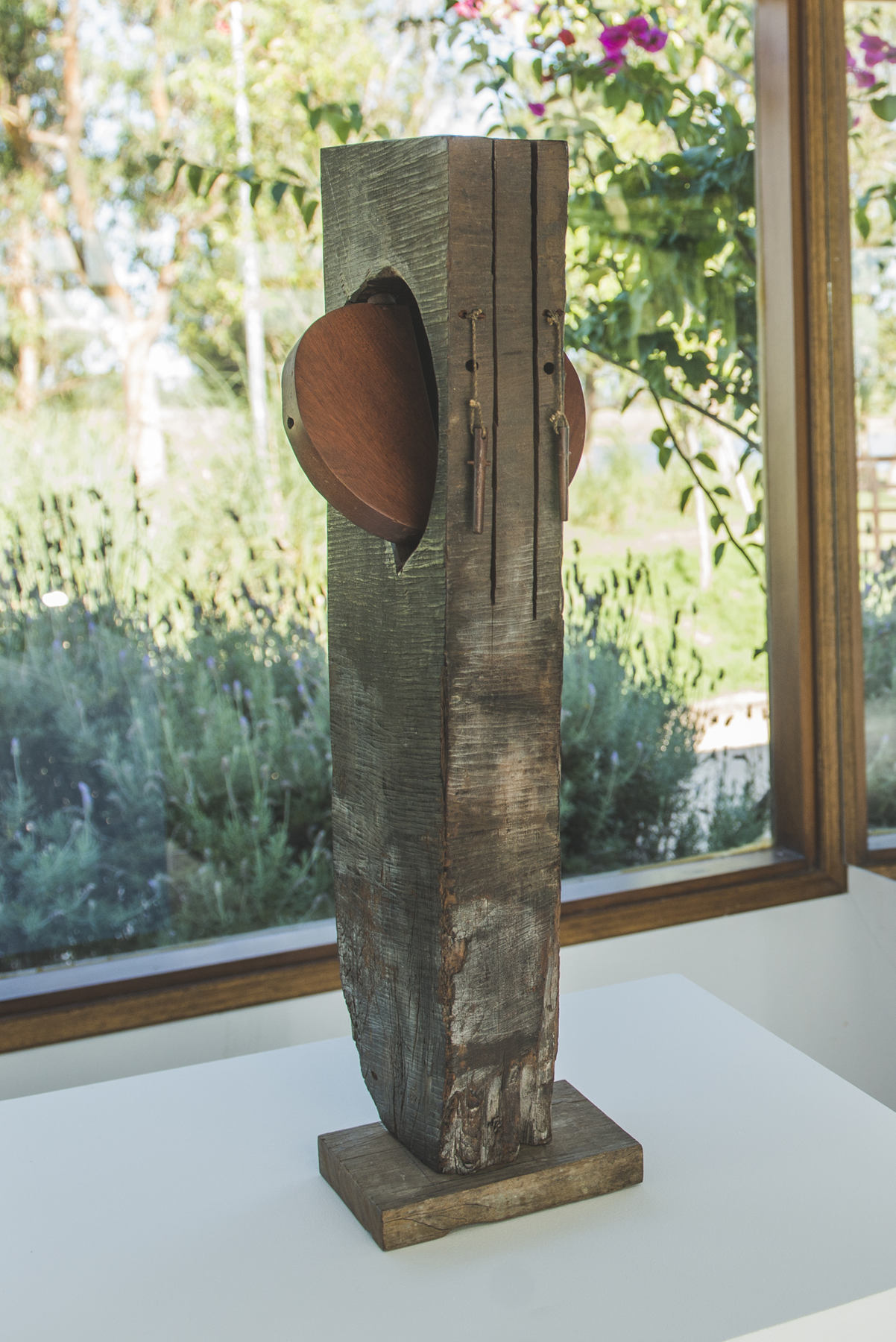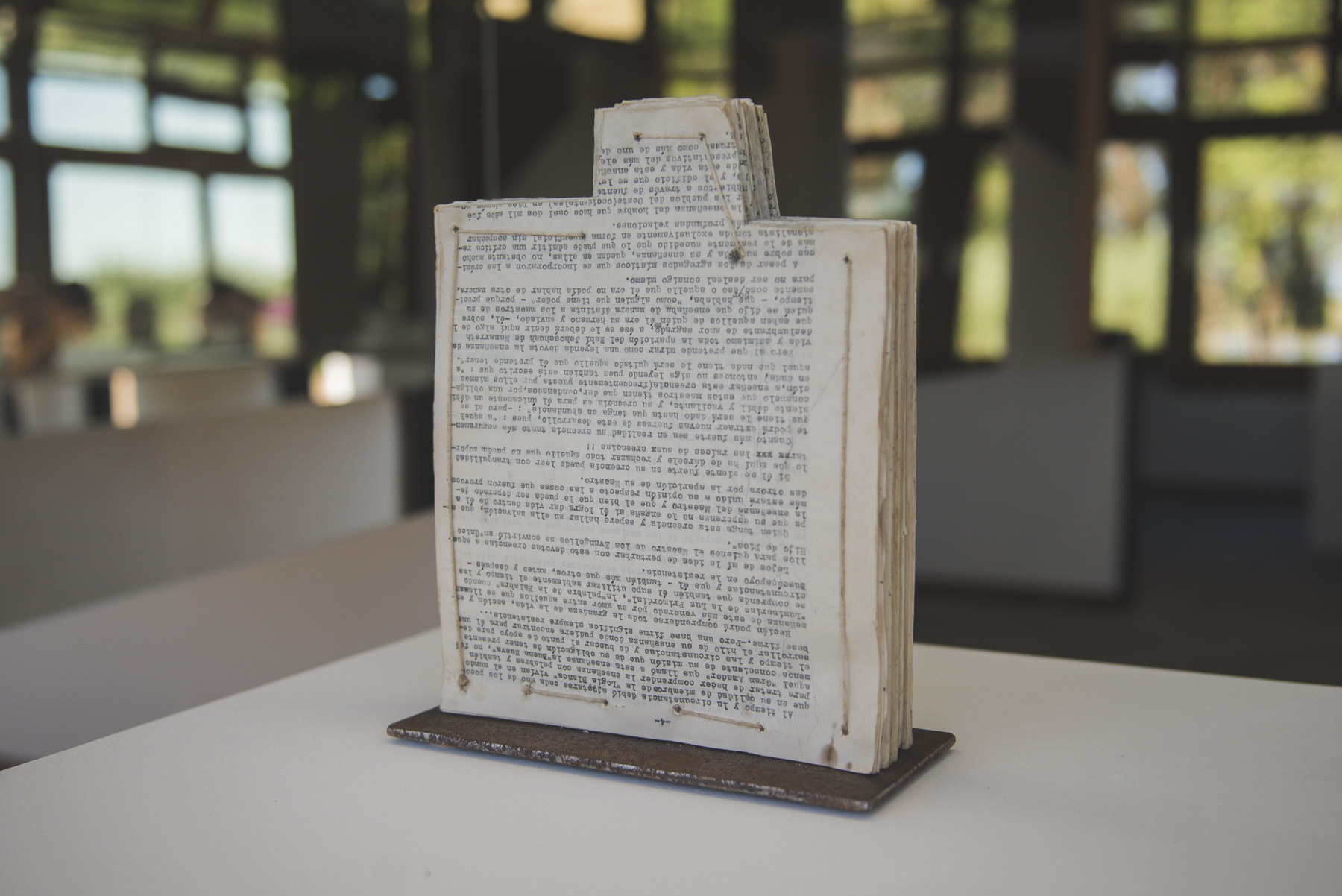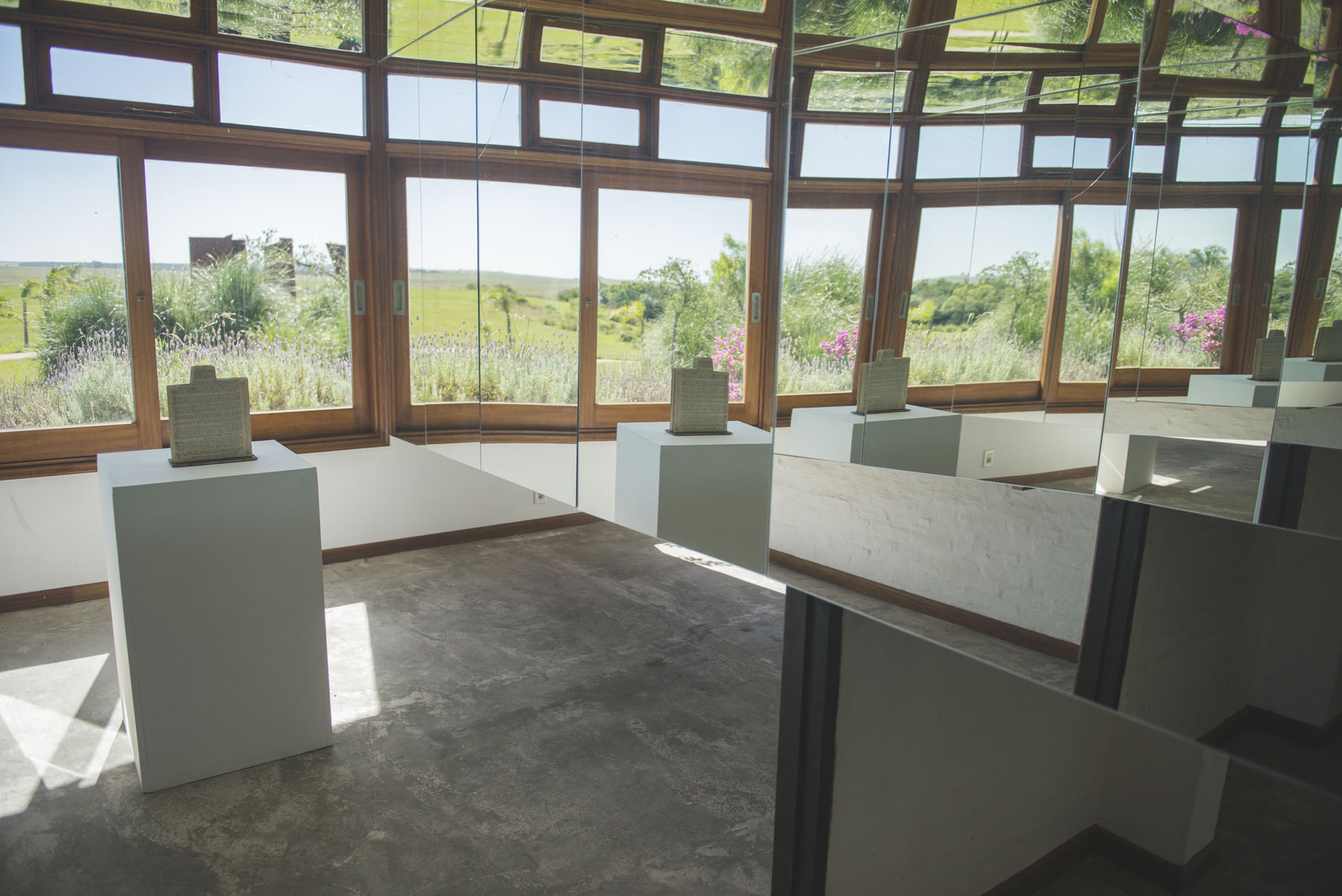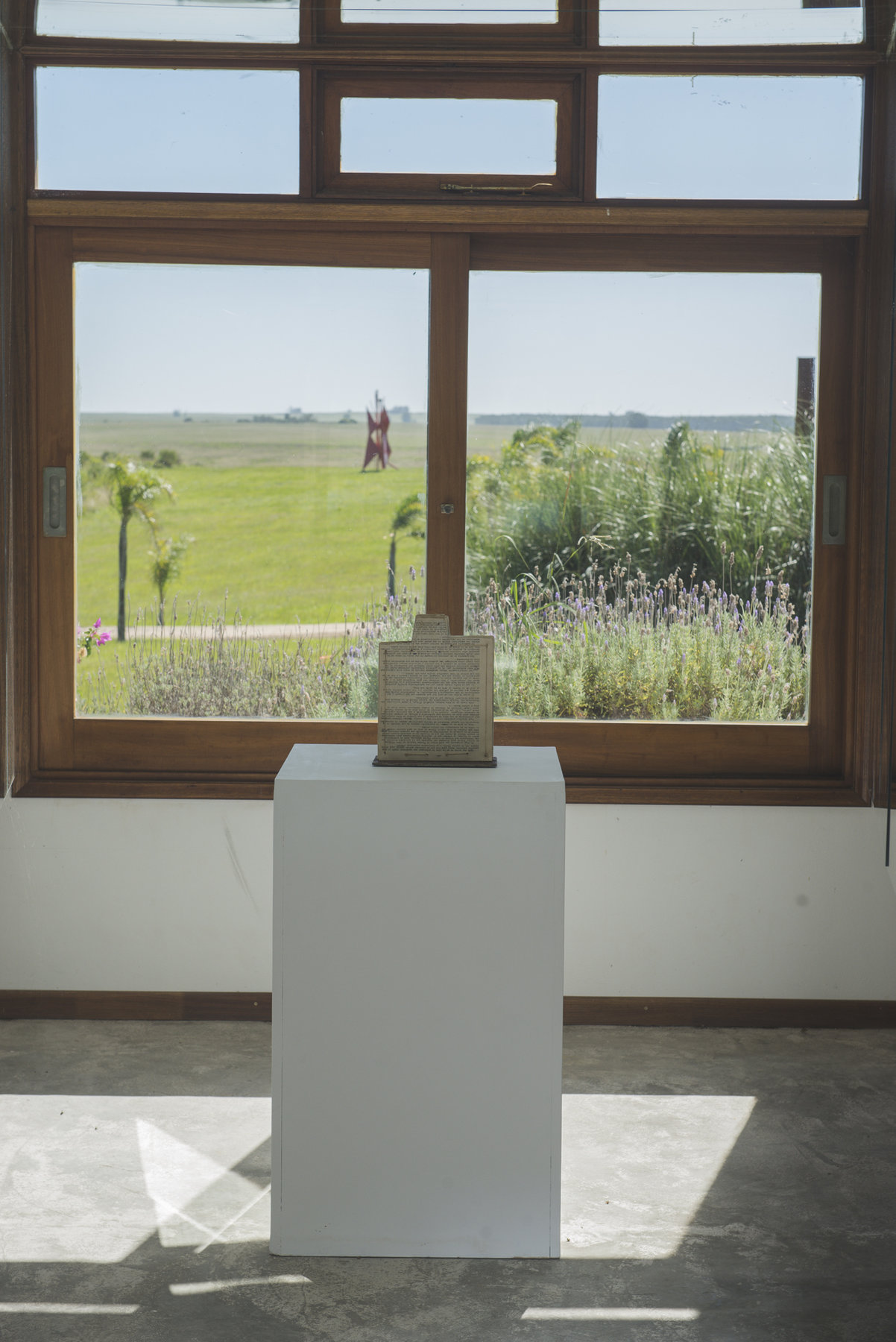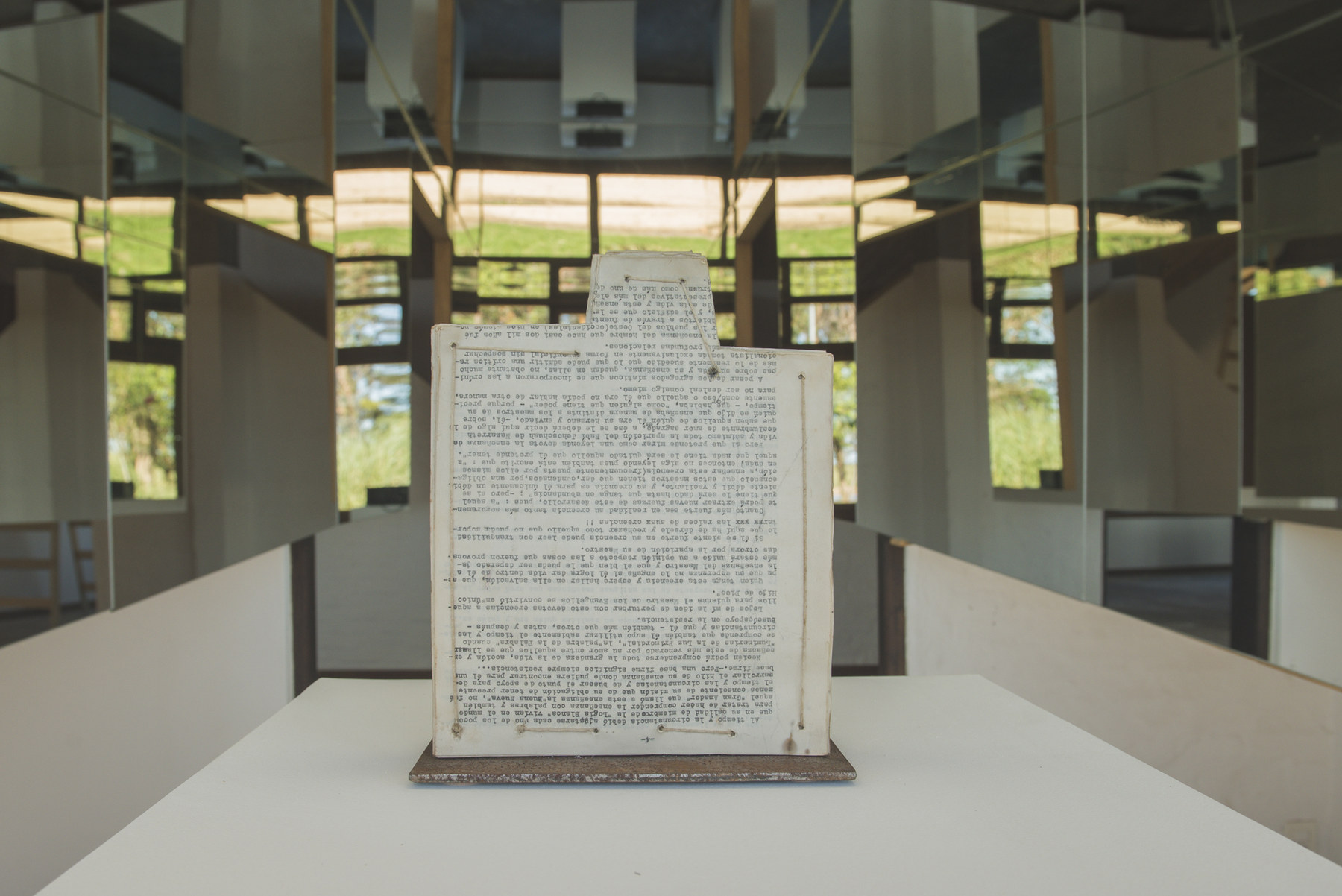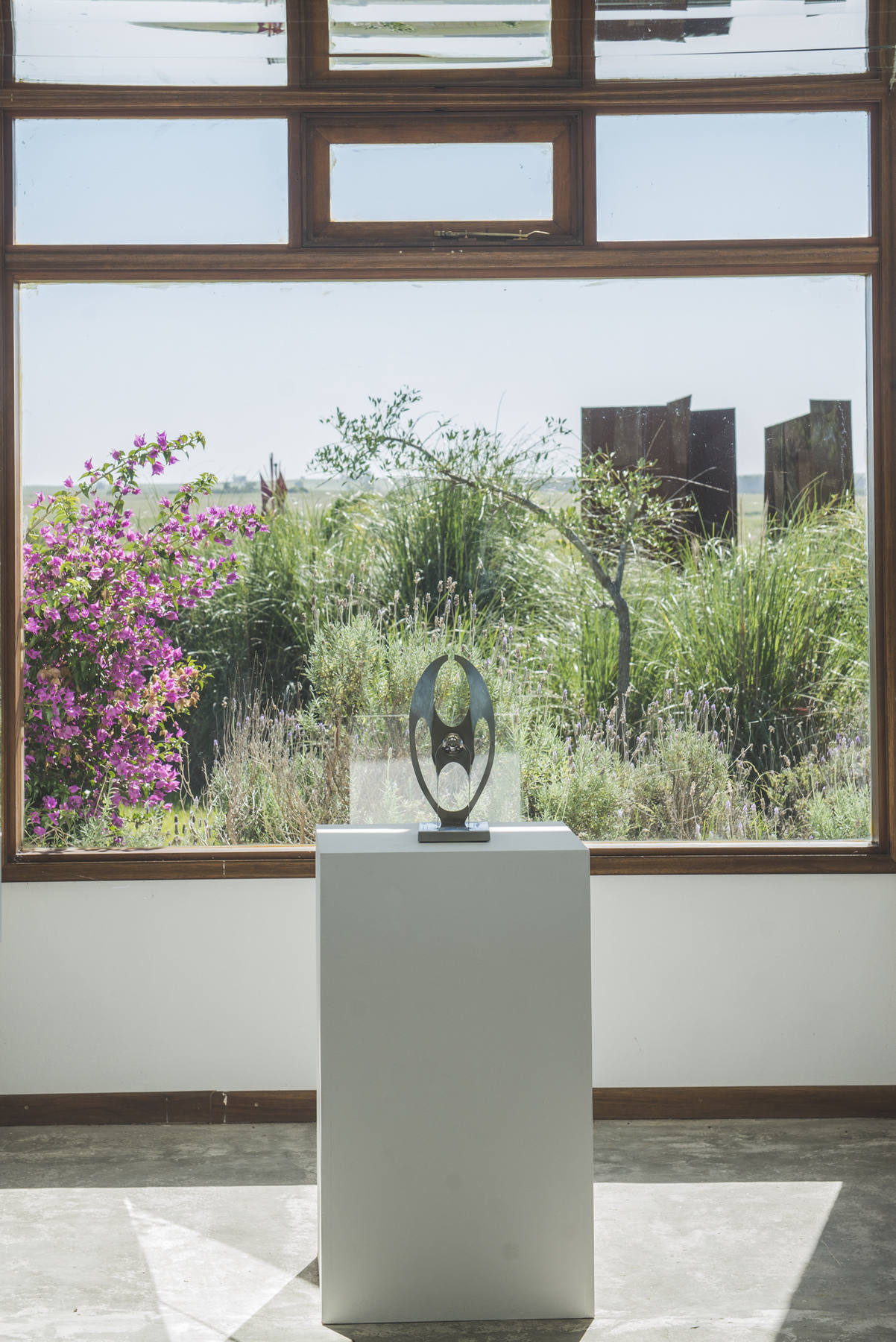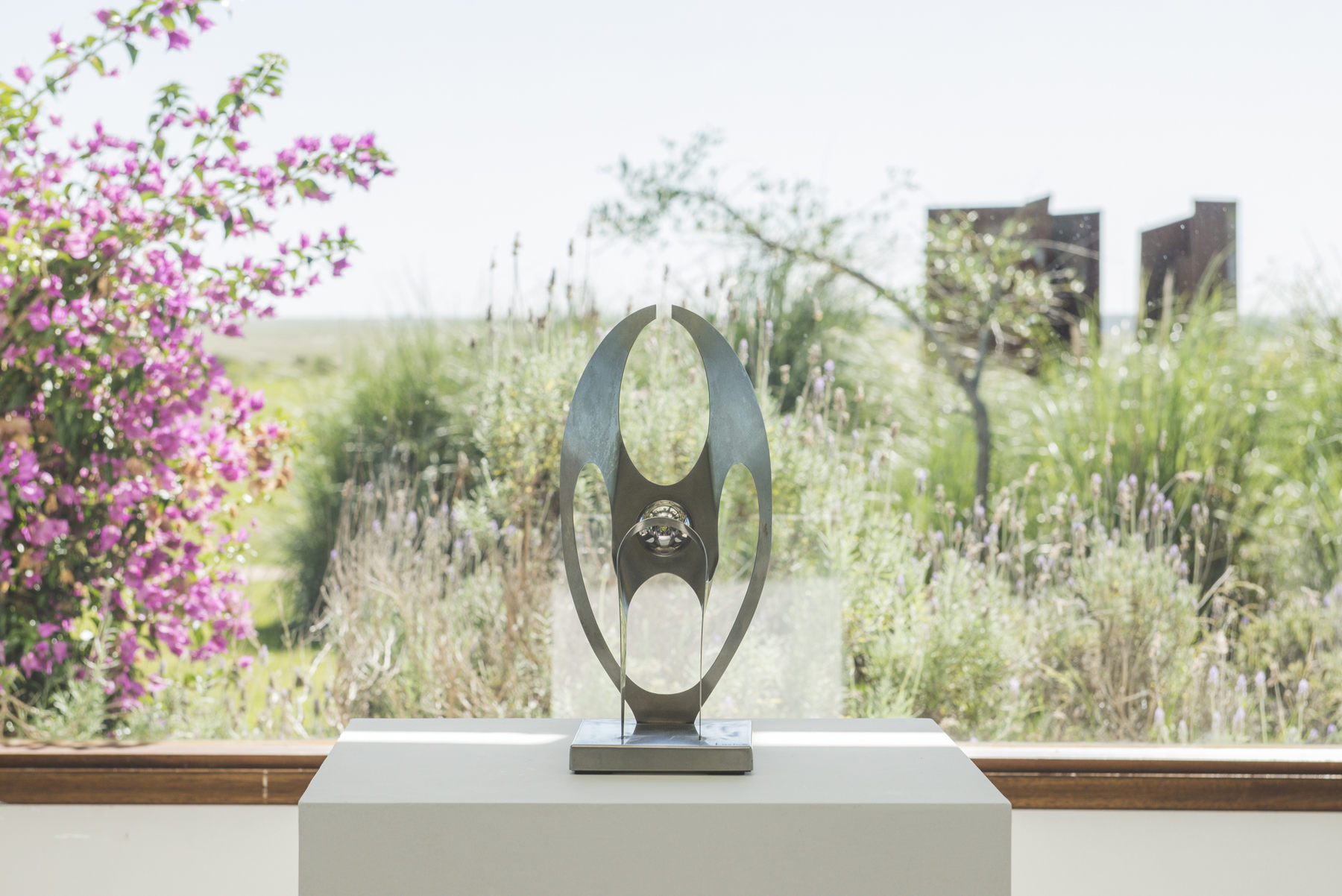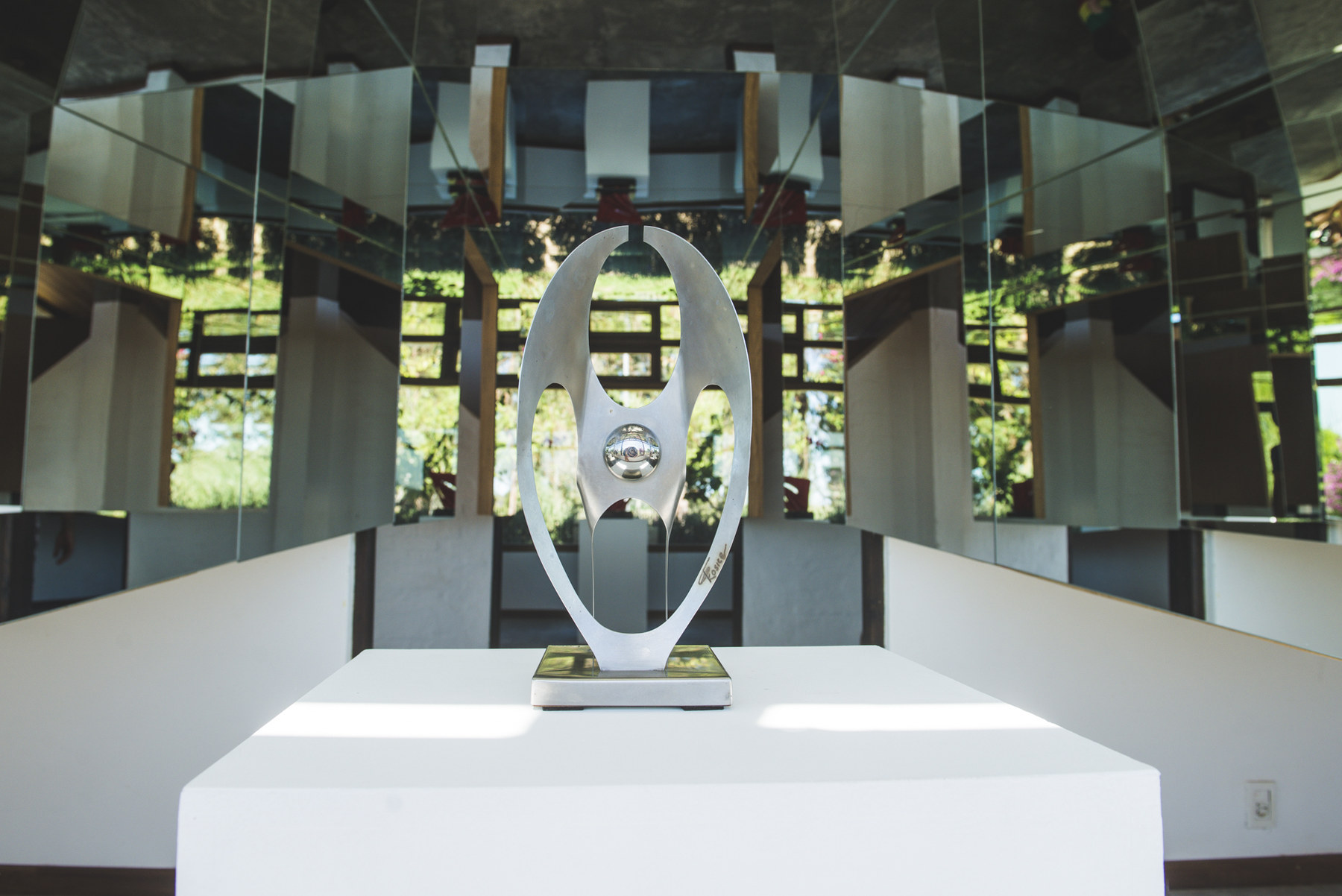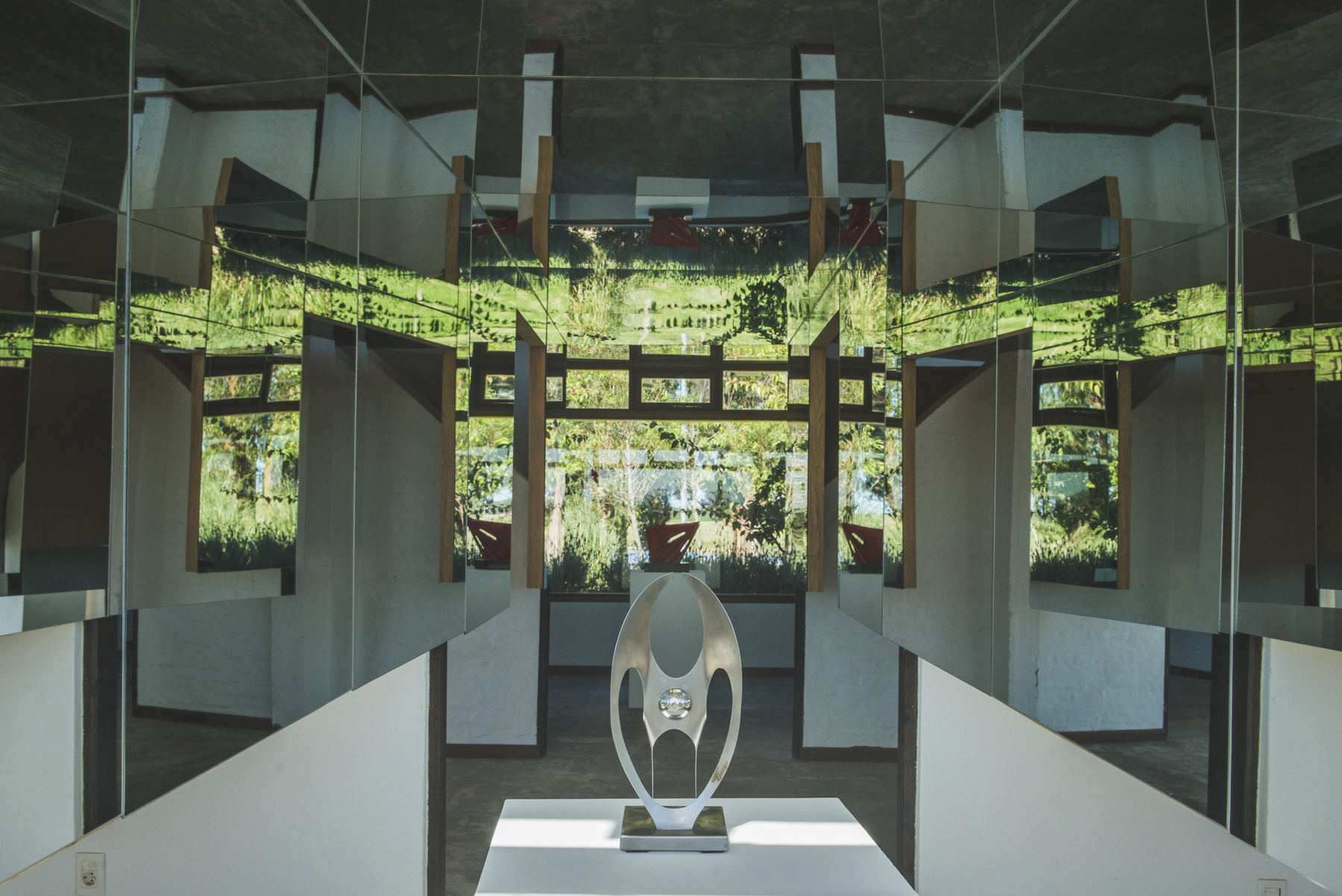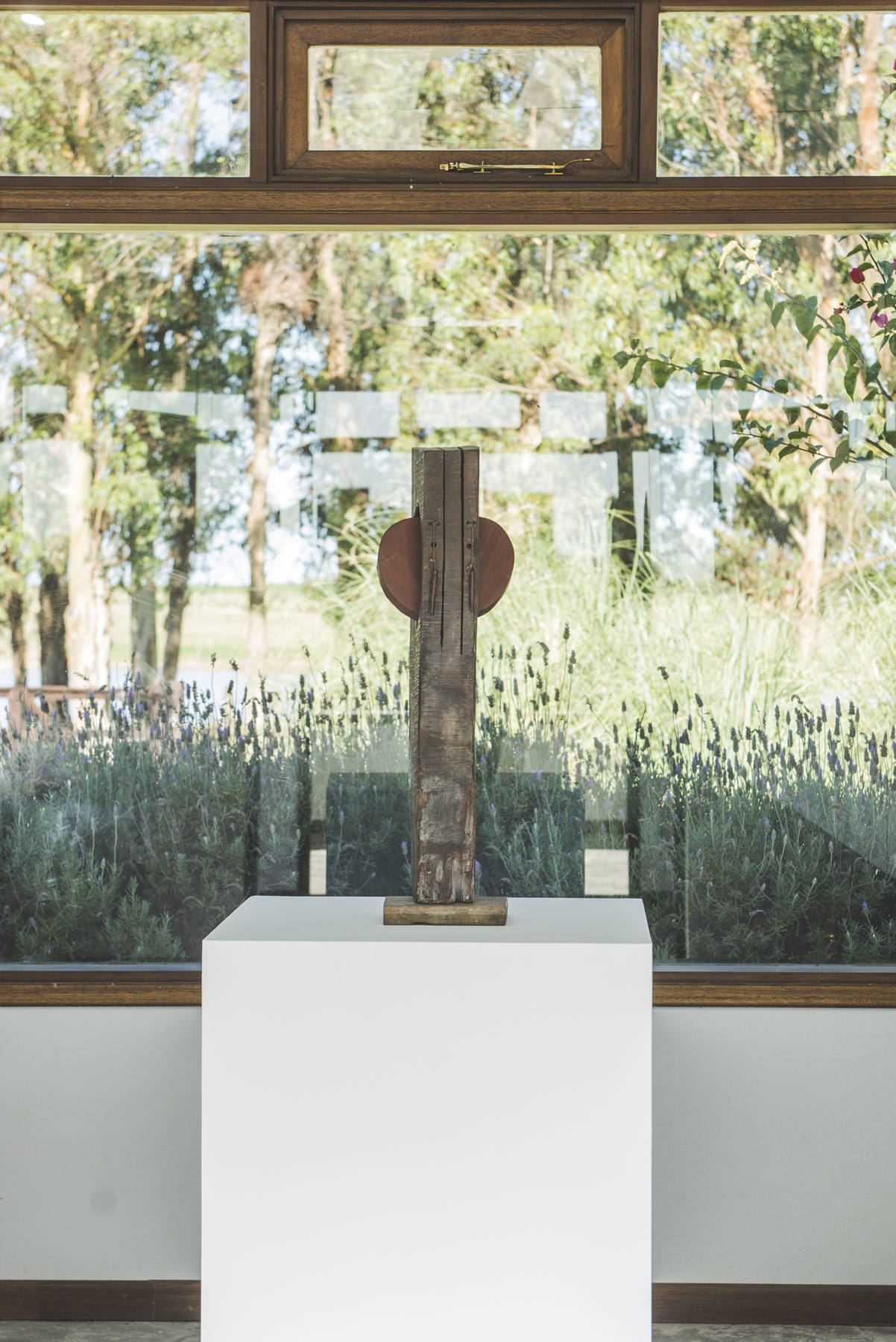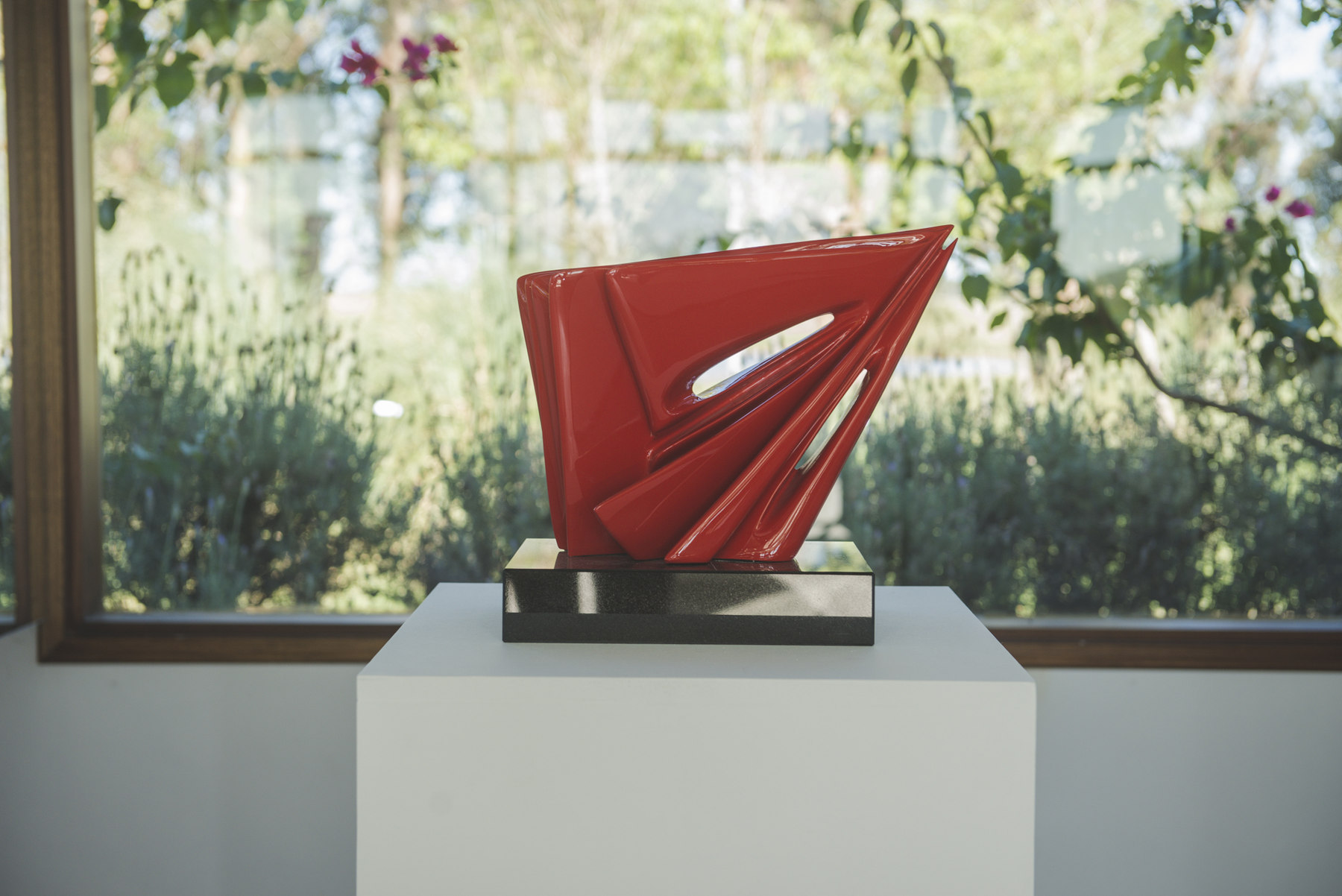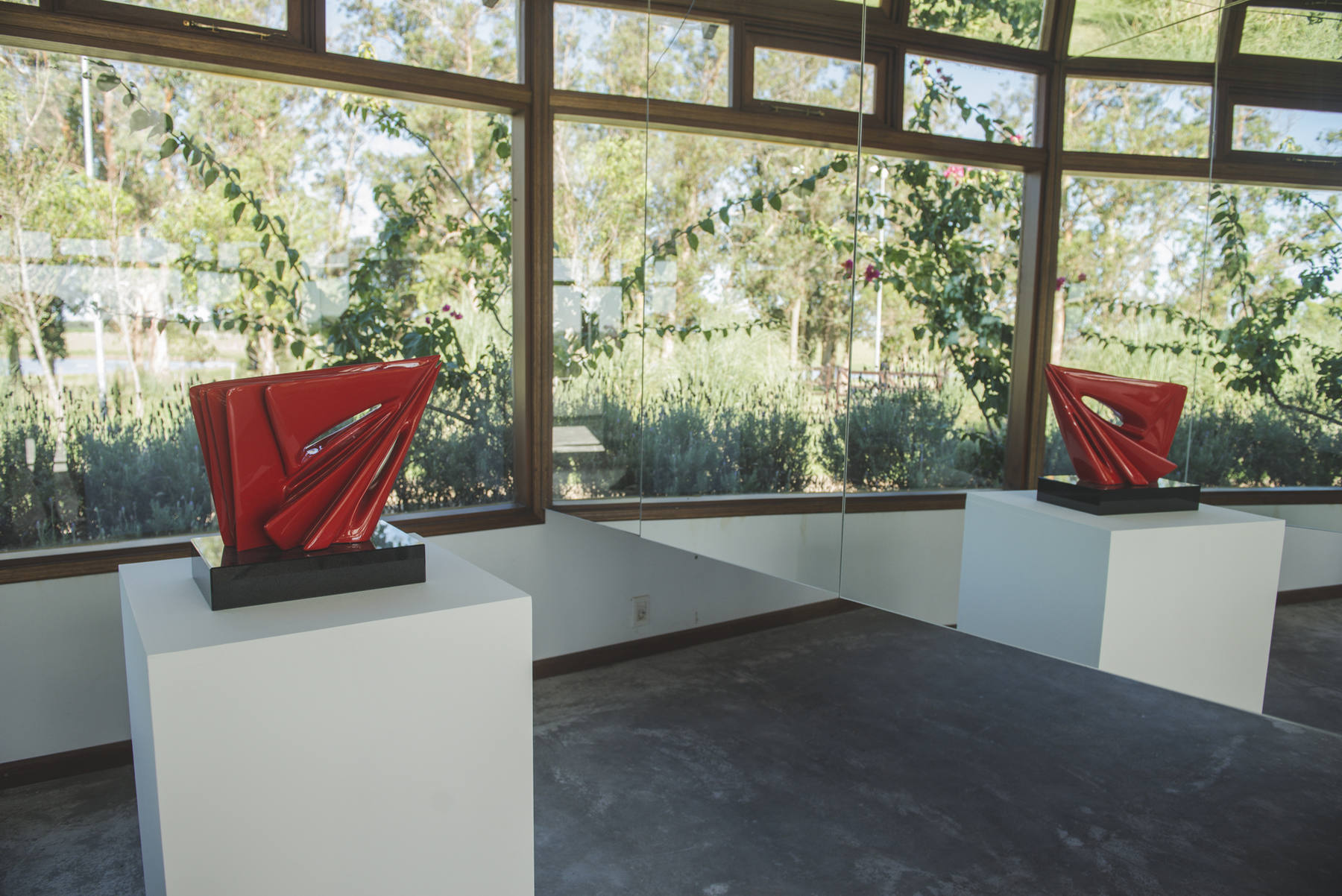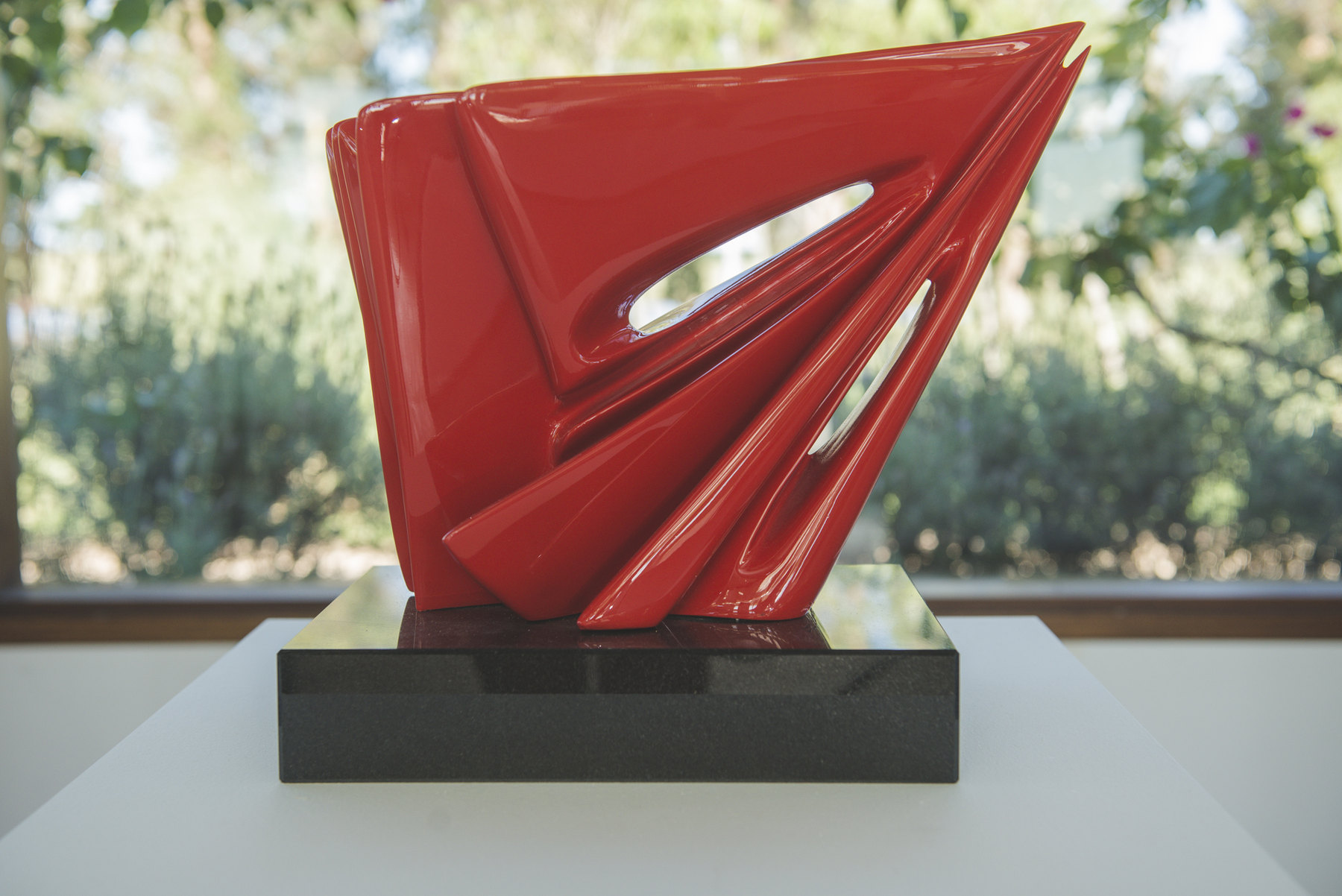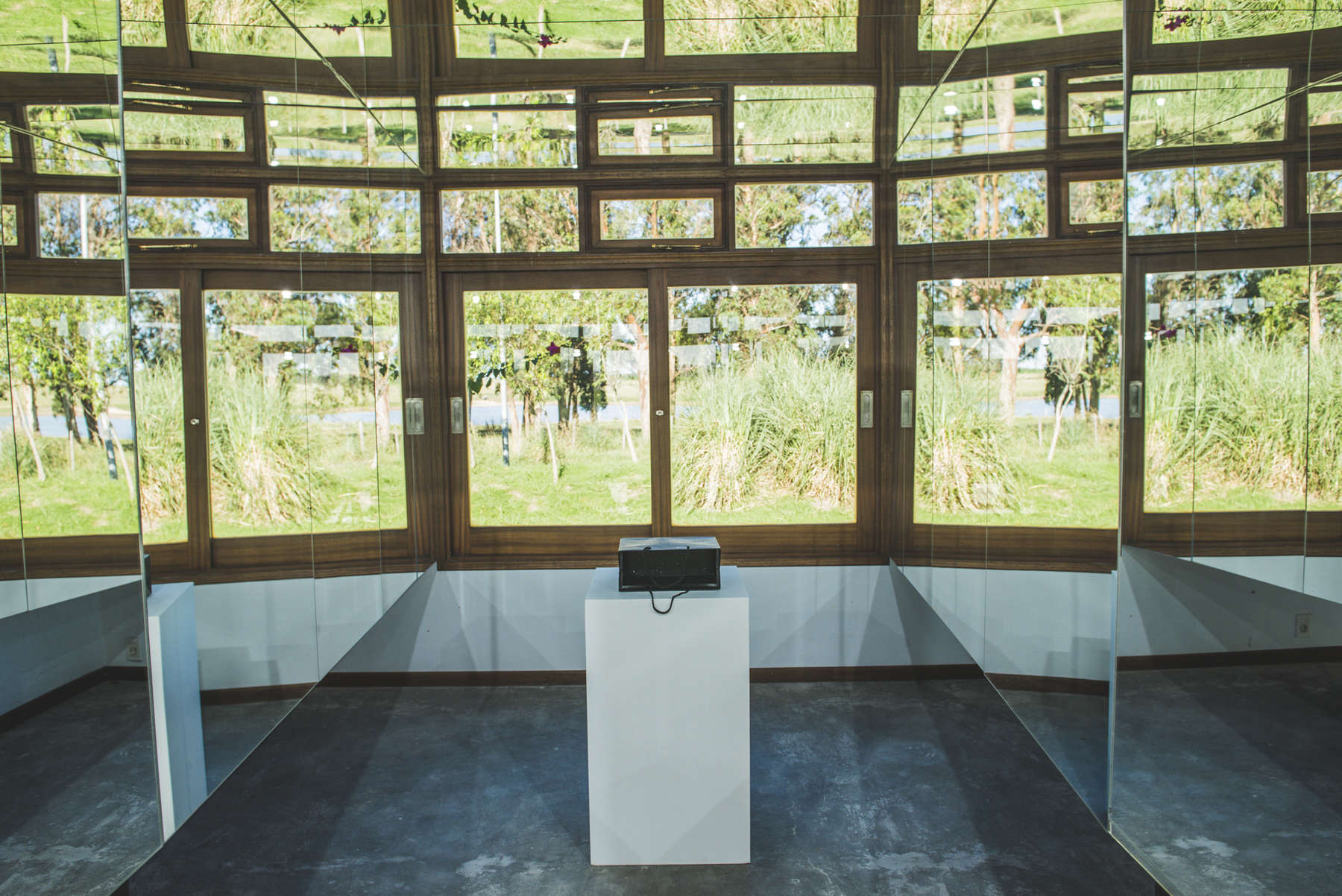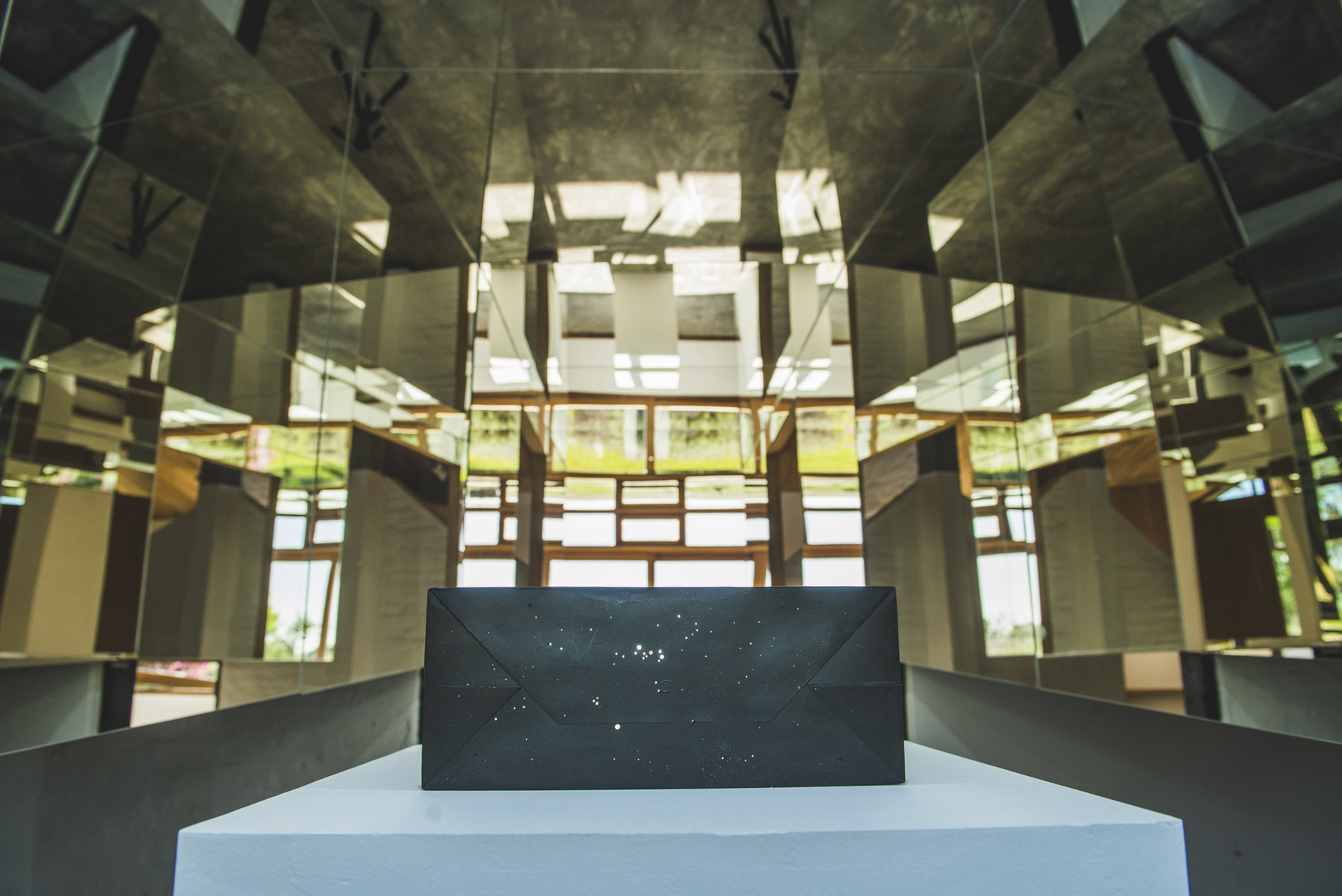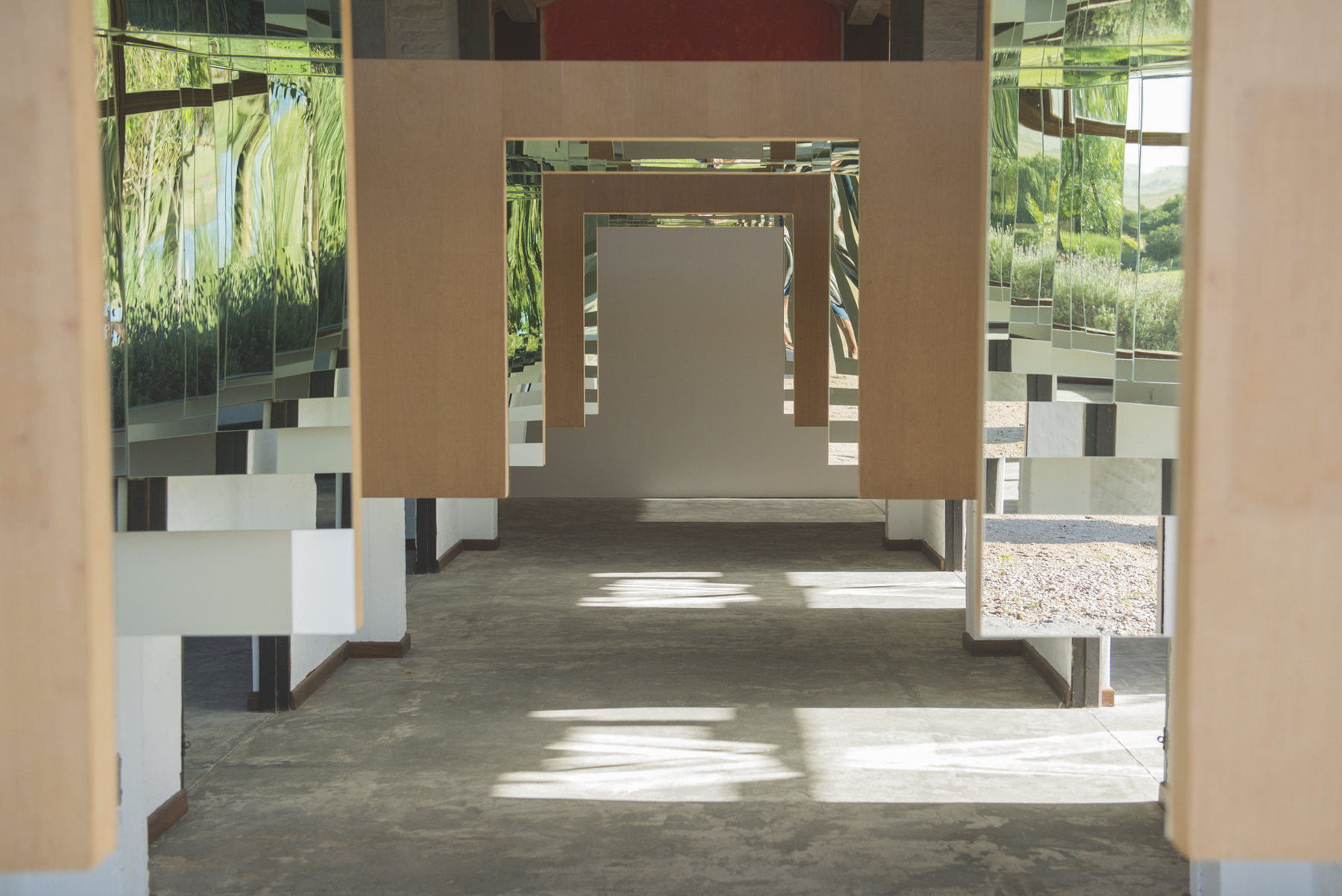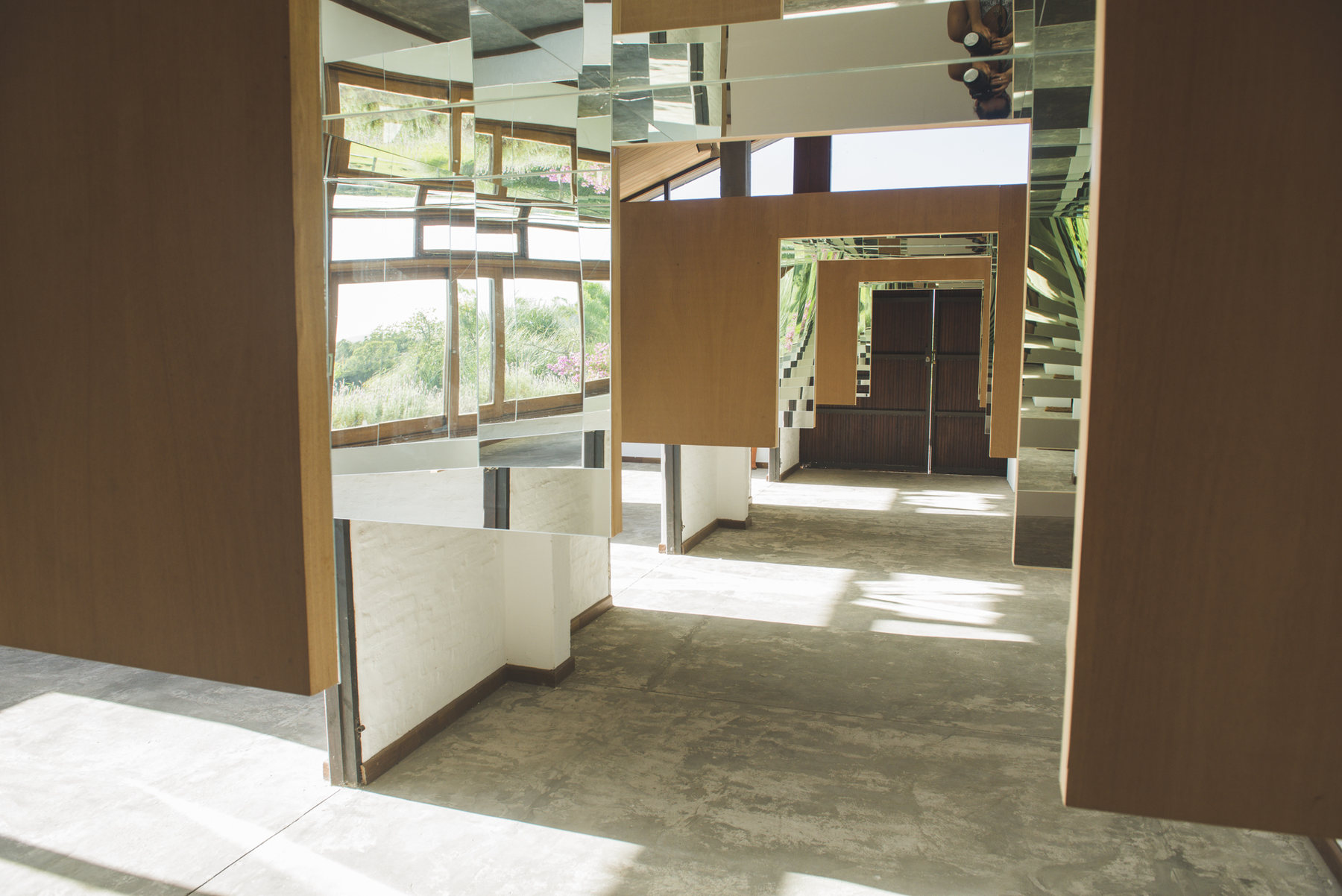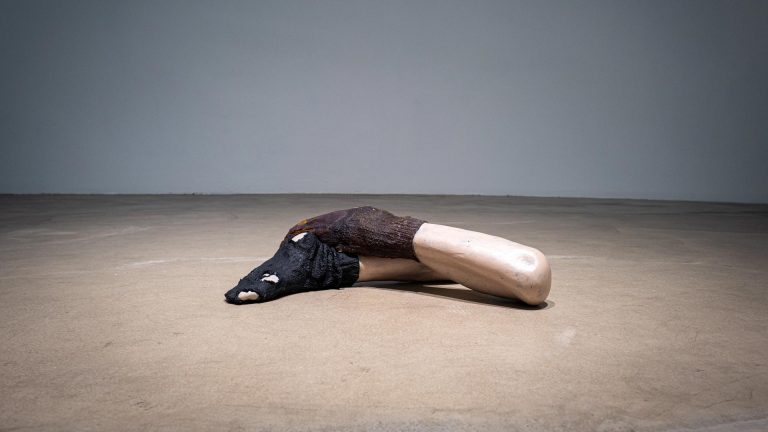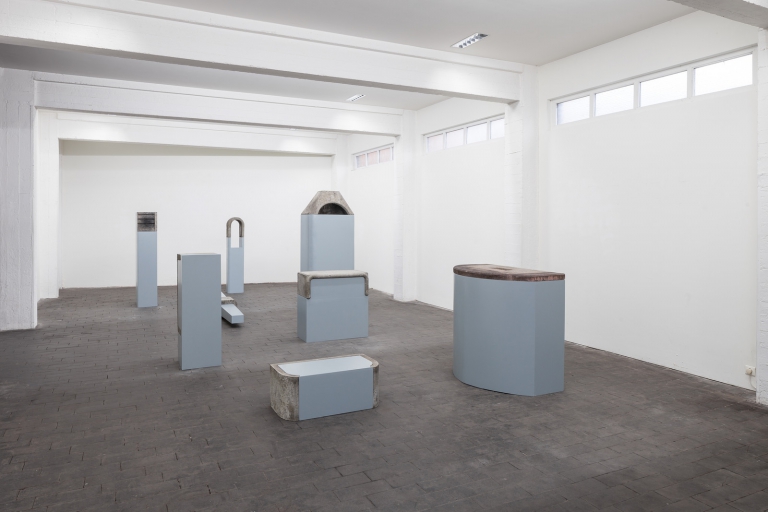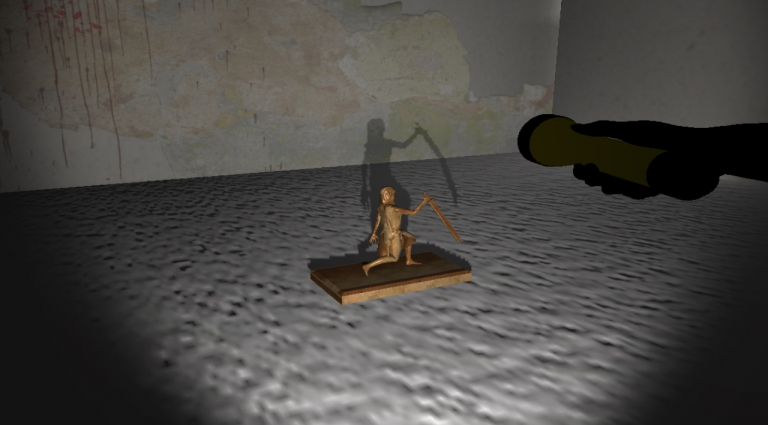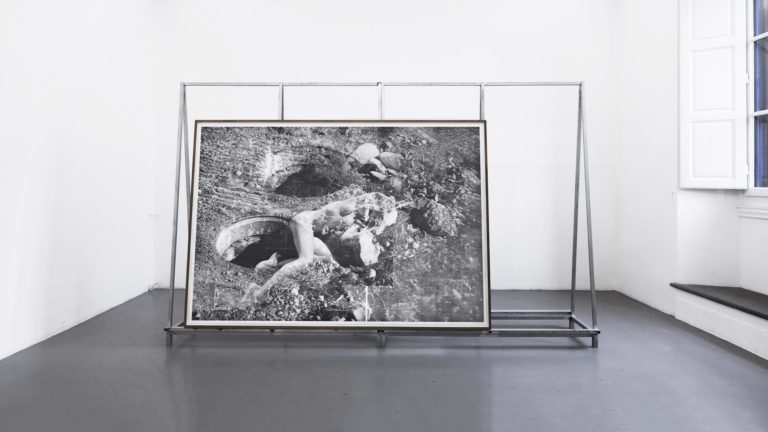Artists: Artur Lescher, Pablo Atchugarry, Wifredo Diaz Waldez, Gyula Kosice, Octavio Podesta, Yuken Teruya, Verónica Vázquez
Exhibition title: Inner Dialogue
Curated by: Domenico de Chirico
Venue: Piero Atchugarry Gallery, Pueblo Garzón, Uruguay
Date: January 26 – April 2, 2017
Photography: all images copyright and courtesy of the artists and Piero Atchugarry Gallery
The Piero Atchugarry Gallery is delighted to present the “Inner Dialogue” exhibition curated by Domenico de Chirico with works by Pablo Atchugarry, Wifredo Díaz Valdez, Gyula Kosice, Octavio Podestá, Frank Stella, Yuken Teruya, Verónica Vázquez and Artur Lescher.
“Inner Dialogue” is an attempt to thematize and formalize Maurice Merleau-Ponty’s (1908–1961) concept of “Spielraum” and intermediate living spaces, investigated through a complementary structure that includes a playful and more serious approach, as well as a swarm of micro-singularities. The term, usually translated as “margin” or “field of action”, literally means “play space”, whose character is dialogic. It also provides for an erotic tension between the correlated elements, experienced as a precarious pull between the animate and inanimate, in which it is the element understood as a phenomenon that counts. Inside the Spielraum impulses and feelings are not purely internal because enjoyment comes from and through the world around us. The body does not perceive and, more generally, it does not act except in a perceptive and existential field, or in a “playing field”, in the words of the French philosopher Merleau-Ponty: beyond the Spielraum, nothing can be perceived. The field itself gives meaning to the relationships that take place within it. Therefore, different works engulf rather than exclude one another. Entering this “field of action” with an awareness of the lateral nature of events brings with it a recognition of the reality of all the elements, of the meandering of their flow, the permeability of the ego, the ambiguity of every perception, action and thought. The gratifying experience inside this Spielraum is destined to be multisensory and polysemantic.
In “Inner Dialogue”, the Spielraum is metaphorically constructed by the captivating work of the Brazilian artist Artur Lescher (*1962), while at the same time incubated in the exhibition space of the gallery in Pueblo Garzón, Uruguay. Lescher, loyal to the trinomial nature-environment-space, has designed this monumental installation – built from three wooden tubes completely covered in mirrors – that feeds off the relationship between the morphology of its host location and its external corollary: reinterpreted in a chromatic and structural key, the relationship is reflected in an extraordinary work that offers visitors the opportunity to enjoy a unique experience through a reflected and continuous transfer of stimulations and impulses between the inside and outside. He often creates post-minimal, sculptural installations signified by great architectural power. His works, designed as narrative structures, inhabit and transform the space by creating new levels and involving the bystander from different perspectives. Cuts, planes, lines and cavities are used by Lescher to transmit a meditative sense of mysterious silence and poetic calm. He is known for his unique exploration of space and its gravitational components and, set in context, through the use of a wide range of materials; thanks to the active tension of forms, he uses his solemn installations to attempt to give life to new volumes and analyze the relationship between full and empty spaces.
Undeniably open and dense with chinks, “Inner Dialogue” plays host in turn to other works of art with which it interweaves and interacts, conceding several different fields of action. The first is the abstract, vertical structure made of bronze and then painted in an intense, luminous blue color using a paint borrowed from the automotive industry, with the modern yet classically inspired forms of the Uruguayan artist Pablo Atchugarry. The next is a work disassembled and reassembled: poised between conceptual art and primitive expressionism, by the self-taught artist born in the Uruguayan periphery Wifredo Díaz Valdez, it aims to investigate the morphology of materials in various life cycles. The ethnically Hungarian naturalized Argentine Gyula Kosice – one of the most important figures in kinetic art and a cutting-edge light artist – instead proposes an abstract non-figurative matrix sculpture of monumental and almost cybernetic features. Another Uruguayan sculptor, Octavio Podestá has built his sculpture from pieces of iron and wood waste, tested with a mechanistic approach, including color as another key element and ranging stylistically from abstract to figurative. The American minimalist painter and sculptor Frank Stella is responsible for the only work installed on the wall, made of steel, iron and fibreglass tubes; his uncompromising structure offers a personalized vision of three-dimensionality with forms derived from cones, pillars, curves, waves and decorative architectural elements. With a neo-Pop approach, the artist Yuken Teruya, originally Japanese but now based in New York, works with various materials, especially paper, with references to current culture formally combined with the traditional techniques of the island of Okinawa, his native land: struggling with frenetic Manhattan, he reflects on the effects of consumerism and globalization; collecting anonymous bags produced by leading commercial brands and famous fashion houses, he carefully cuts out trees and branches like small elements of a pleasing world, creating points of light. Finally, the sculpture by the Uruguayan artist Verónica Vázquez, in which modest material (iron wire, wool, cotton, scrap metal, sheet metal cutting, paper and old metal fragments) is an unquestionable triumph and attempts, in a profound and delicate way, to achieve spatial harmony.

